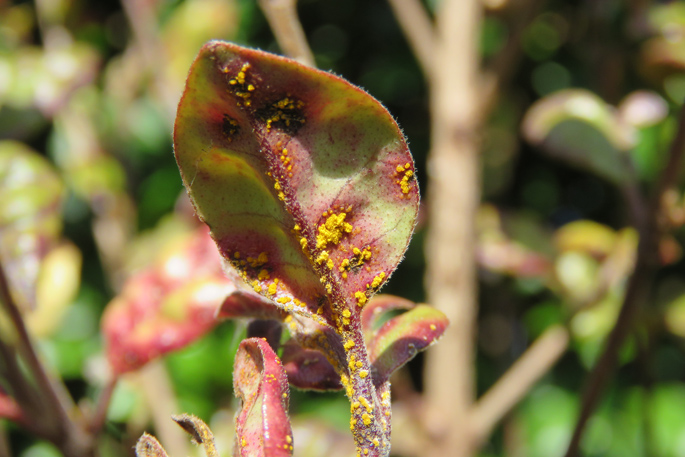The 2019 Myrtle Rust Science Symposium being held in Auckland this month will bring together organisations passionate about safeguarding and sustaining New Zealand’s precious myrtles for future generations.
The invasive disease has the potential to damage many ecologically, economically and culturally significant tree species, including pohutukawa, rata and Manuka. Investment in science is helping increase understanding of the disease and management options.
First detected in New Zealand in 2017, myrtle rust is now widely distributed across key parts of the North Island and the South Island’s north and west.
Ministry for Primary Industries’ manager of science policy Naomi Parker says more than 100 delegates are expected to attend the two-day event on September 9-10, including researchers, science funders, central and local government, Maori, environmental and industry groups.
"More than 100 delegates are expected to attend the two-day event, including researchers, science funders, central and local government, Māori, environmental and industry groups," says Naomi Parker, manager of science policy at the Ministry for Primary Industries (MPI).
Biosecurity New Zealand, part of MPI, is organising the symposium with support from the Myrtle Rust Strategic Science Advisory Group and the Department of Conservation.
“The symposium will discuss the latest research progress, and what it means for the organisations working to limit the impact of myrtle rust” says Naomi. “We’ll also hear about what’s happening on the ground to manage the disease, and what is needed from the science.”
Myrtle Rust Strategic Science Advisory Group chair Ken Hughey, who is also the Department of Conservation’s chief science adviser, says a key aim of the symposium is to strengthen the myrtle rust community so stakeholders continue to communicate and share research, insights and new work.
“Encouraging a collaborative community is an action coming out of the new Myrtle rust science plan, which has been developed by the SSAG to guide what science will be most valuable for the management of myrtle rust.”
Ken says the science plan builds on research already underway and which will be shared at the symposium. This includes the outcome of more than 20 research projects commissioned by Biosecurity NZ, on subjects ranging from seed banking to integrating matauranga Maori (Maori knowledge) alongside Western science to better understand the disease and its impacts on native taonga.
Speakers will also share updates on the Manaaki Whenua Landcare Research’s ‘Beyond myrtle rust’ programme, and the recently-established programme Nga Rakau Taketake – Saving our Iconic Trees, administered by NZ’s Biological Heritage Nga Koiora Tuku Iko.



0 Comments
Leave a Comment